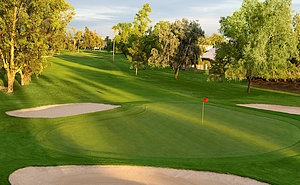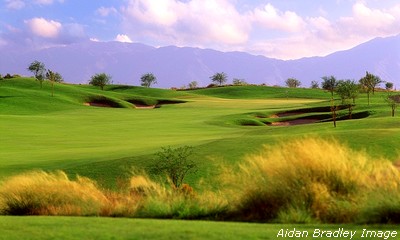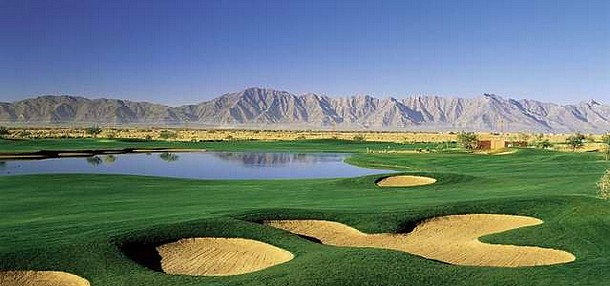San Marcos Golf Course – Arizona Golf Courses
Arizona’s first golf course just got better – $3.9 million dollars better. So if you want a feel for the early days of golf in Arizona, have a loop at the historic Crowne Plaza San Marcos Golf Resort, located in Chandler, one of several communities just southeast of downtown Phoenix. Not only was it the first course in the state with grassed greens, but the first property in Arizona to offer a full complement of resort amenities.
In fact, it is listed on the National Register of Historic Places. The San Marcos Resort was built in 1912, the year Arizona was granted statehood by the U.S. Congress, by Dr. Alexander Chandler in the suburb he founded, that still bears his name today. The putting greens at San Marcos were grassed one year later.
While old is good when associated with the National Register of Historic Places, it isn’t necessarily considered a plus when it comes to golf. That’s why the owner of the resort, Interwest Capital, who purchased the property in January 2013 spent $3.9 million to upgrade the golf course and clubhouse for the next century.
 The San Marcos golf course re-opened in November 2014 with a classic blending the old and new. The “old” elements include mature salt-cedar and tamarisk trees lining the fairways of this 6,640 yard layout as well as lakes and a canal that come into play throughout the 18-hole tract.
The San Marcos golf course re-opened in November 2014 with a classic blending the old and new. The “old” elements include mature salt-cedar and tamarisk trees lining the fairways of this 6,640 yard layout as well as lakes and a canal that come into play throughout the 18-hole tract.
The “new” incorporates lush green fairways and fluffy sand bunkers providing plenty of birdie opportunities for golfers who don’t try to overpower the course. Also new is the 19th hole, now called Grill 60, which happens to be the course record for low score shot by John Quarty several decades ago. The Pro Shop also falls into the “new” category as it has been completely renovated and features an array of contemporary apparel and equipment.
The course provides the perfect setting for a relaxing round of golf. Unlike many of the desert courses in Arizona, the fairways are wide with generous landing areas. The greens are well-bunkered and undulating putting surfaces vary in size and shape.
The finish is fun with a pair of par-5s that are reachable in two shots. The 18th is a risk-reward challenge, however, with the canal cutting across the fairway just short of the green and large bunkers guarding both sides. If you decide to go for the green in 2, take enough club to cover the front of the green; how you stop it then, is up to you.
The AZGA “Local Hang” for San Marcos is awfully convenient. Grab a seat on the cocktail patio of Grill 60 and settle in to watch the groups behind you finish. Although you probably won’t see another 60 carded, the grill’s staff will have you a couple under par before you’re through.




